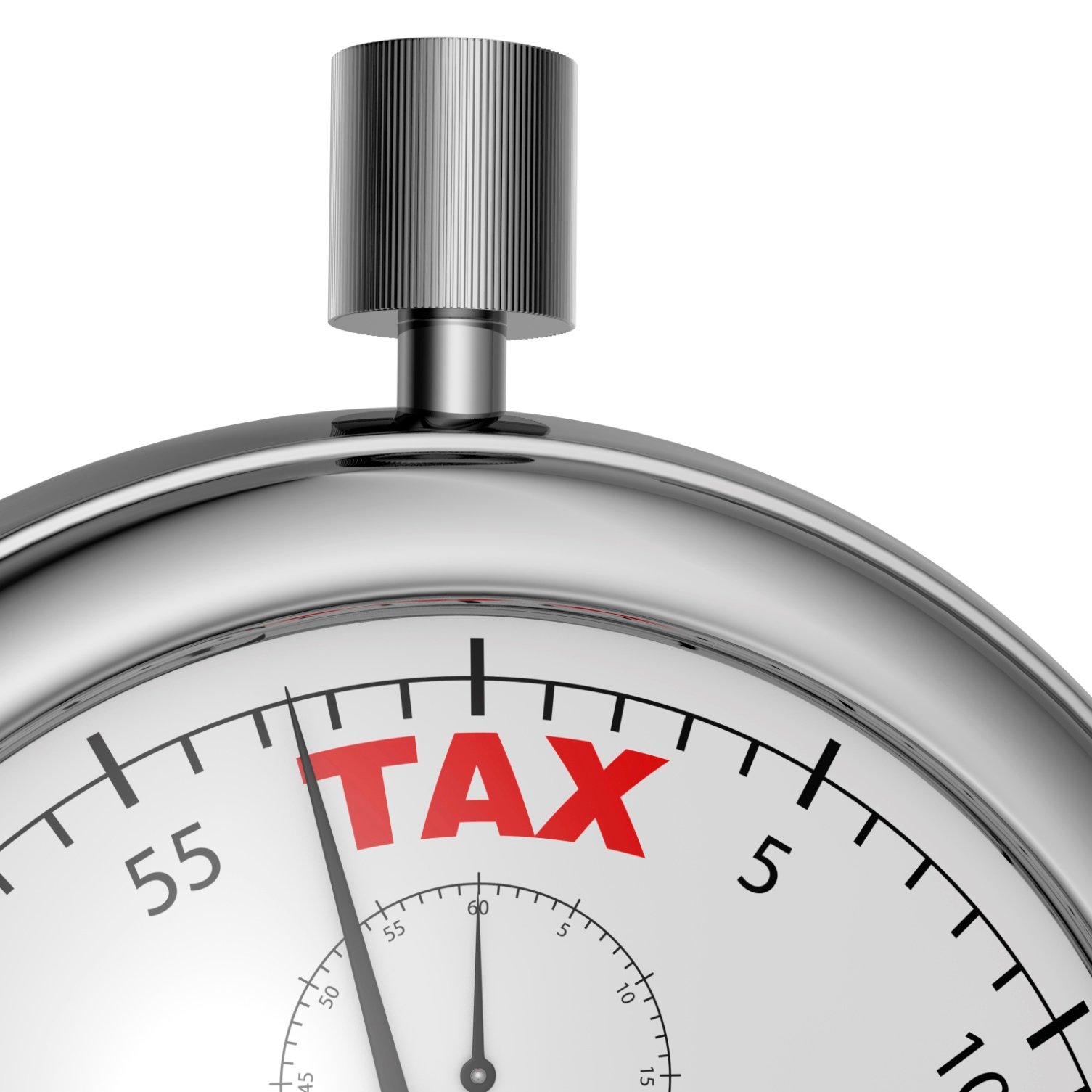Special Report
States With Highest and Lowest Taxes

Published:
Last Updated:

In the U.S. federalist system, each state government decides how to generate revenue — that is, which taxes to collect, and how. No state tax code is identical, and largely as a result, what the average American pays annually in taxes varies from state to state.
24/7 Wall St. reviewed each state’s tax burden — the portion of income that goes to state and local governments taxes — from the report, “Facts & Figures 2017: How Does Your State Compare?” provided by tax policy research organization Tax Foundation.
[in-text-ad]
According to the report released Monday, tax burdens in the 2012 tax season were as low as 6.5% in Alaska and as high as 12.7% in New York.
Click here to see the states with the highest and lowest taxes.
Americans also pay taxes to other states. Out-of-state visitors pay sales taxes as tourists, investors pay capital gains taxes on investments in other states, and drivers filling up at the gas station bear the cost of extraction and severance taxes levied by oil-rich states. For this reason, the tax burden is not always a perfect reflection of taxes collected.
Approximately 78% of taxes Americans pay go to their own state and local governments. The variation in tax burden between states is due largely to differences in each state’s tax code. High tax states tend to collect more taxes and at higher rates.
Individual income tax collections per capita in fiscal 2015 exceeded the national average of $967 in all of the 10 states with the highest tax burdens. Similarly, in all but two of the 10 states state and local property tax collections per capita in fiscal 2014 were greater than the average of $1,462 across all states.
By contrast, states with low tax burdens tend to collect fewer taxes and at lower rates. Five of the seven states with no individual income tax, for example, are among the 10 states with the lowest tax burdens.
A myriad of cultural, historical, and economic factors help explain the differences in state tax structures. At the root of a state’s tax system is what Tax Foundation experts characterize as a deal between residents and their governments.
“The level of services that citizens of a certain state want is a very personal decision to that state,” said Tax Foundation policy analyst Morgan Scarboro in an interview.
Scott Drenkard, director of state projects at the Tax Foundation, added, “There are some states that offer really high taxes and really great public services.”
Generally, states with lower income residents tend to have lower tax burdens. All but three of the 10 states with the lowest tax burdens report lower-than-average per capita income.
Eight of the 10 states with the highest tax burdens, on the other hand, report per capita income greater than the national average of $48,112 a year. The three states with the highest tax burdens — Connecticut, New Jersey, and New York — have among the five highest per capita incomes.
To identify the states with the highest and lowest tax burdens, 24/7 Wall St. reviewed state and local tax burdens as a share of state residents’ income in fiscal 2012 provided by the Tax Foundation. Personal income per capita for each state is for 2015 and came from the U.S. Bureau of Economic Analysis. State individual income tax collections per capita are for fiscal 2015, state and local property tax collections per capita are for fiscal 2014, state general sales tax collections per capita are for fiscal 2015, all from the “Tax Foundation’s Facts & Figures 2017: How Does Your State Compare?” report. Sales tax rates, including combined rates, gasoline excise tax rates, cigarette excise tax rates, spirit and wine excise tax rates are as of January 1, 2017 and were also provided by the Tax Foundation. We also considered economic data including poverty rates and homeownership rates from the U.S. Census Bureau’s 2015 American Community Survey.
These are the states with the highest and lowest taxes.
States With the Highest Taxes:

10. Oregon
> Taxes paid as pct. of income: 10.3%
> Income per capita: $43,783 (22nd lowest)
> State income tax collections per capita: $1,814 (6th highest)
> Property tax collections per capita: $1,350 (25th highest)
> General sales tax collections per capita: $0 (tied–5th lowest)
More than one in every $10 earned in Oregon goes to state and local governments in the form of taxes. Some 40.8% of all state and local tax revenue in Oregon came from individual income tax in 2014, the largest such share in the country. Oregon is one of a handful of states with no sales tax. Sales taxes often have relatively low rates and are levied across a broad base, and according to Tax Foundation tend to be more beneficial to state economies. Speaking with 24/7 Wall St., Drenkard gave Oregon as an example of how this is not always the case. Revenue seems to be handled well by the state government. Oregon is one of just three states in the country with a fully funded pension system.
[in-text-ad]

9. Rhode Island
> Taxes paid as pct. of income: 10.8%
> Income per capita: $50,018 (16th highest)
> State income tax collections per capita: $1,151 (17th highest)
> Property tax collections per capita: $2,307 (7th highest)
> General sales tax collections per capita: $908 (25th highest)
An estimated 10.8% of income per capita in Rhode Island goes to state and local governments in the form of taxes, a heavier tax burden than the 9.9% national figure. One factor contributing to Rhode Island’s heavy tax burden is the state’s high sales tax. The state charges a 7% sales tax on goods and services, the highest of any state other than California. The excise tax on gasoline in Rhode Island is 33 cents per gallon, third highest of all states.

8. Minnesota
> Taxes paid as pct. of income: 10.8%
> Income per capita: $50,871 (14th highest)
> State income tax collections per capita: $1,889 (5th highest)
> Property tax collections per capita: $1,411 (20th highest)
> General sales tax collections per capita: $999 (17th highest)
State and local taxes paid in Minnesota equal 10.8% of the state’s personal income per capita. Nationwide, property taxes account for an average of 31.3% of all state and local tax collections, the largest share compared to other tax types. Minnesota is an exception, as payroll taxes account for the largest share of all state and local tax revenue. Meanwhile, property taxes in the state only makeup for 25.0% of all taxes collected.

7. Maryland
> Taxes paid as pct. of income: 10.9%
> Income per capita: $55,972 (7th highest)
> State income tax collections per capita: $1,390 (9th highest)
> Property tax collections per capita: $1,491 (16th highest)
> General sales tax collections per capita: $734 (20th lowest)
One of the wealthiest states in the country, Maryland’s income per capita is $55,972 compared to the corresponding $48,112 national figure. Maryland residents also lose a larger share of their paycheck to state and local taxes than is typical. Across the state, 37.4% of all state and local tax revenue comes from personal income, the largest such share of any state with the exception of Oregon. Homeowners and consumers in Maryland catch a break, however. A smaller than average share of state and local tax revenue come from property and sales taxes.
[in-text-ad-2]

6. California
> Taxes paid as pct. of income: 11.0%
> Income per capita: $53,741 (10th highest)
> State income tax collections per capita: $1,991 (4th highest)
> Property tax collections per capita: $1,385 (22nd highest)
> General sales tax collections per capita: $983 (19th highest)
California’s annual tax revenue of $151.2 billion is the highest of any state. Even after adjusting for the state’s massive population, California’s effective per capita tax rate as a percentage of income, at 11%, is also higher than all but a handful of other states. State lawmakers are currently debating Senate Bill 1, which would create an estimated $6 billion in annual revenue to improve infrastructure through an increase to the state’s already high 38 cent per gallon gas tax. The state also anticipates an additional $1 billion in annual revenue from tax on marijuana sales.

5. Illinois
> Taxes paid as pct. of income: 11.0%
> Income per capita: $50,295 (15th highest)
> State income tax collections per capita: $1,237 (11th highest)
> Property tax collections per capita: $2,007 (10th highest)
> General sales tax collections per capita: $696 (17th lowest)
Illinois is one of only six states where the tax burden is heavier today than it was three decades ago. Illinois residents pay an average of 11.0% of their income per capita in state and local taxes, an increase from 10.6% in 1977. Despite the heavy tax burden in Illinois, the state’s pension system is severely underfunded. Illinois has just 41% of the funding needed to meet its pension obligations, tied with Kentucky as the smallest share of any state nationwide.
[in-text-ad]

4. Wisconsin
> Taxes paid as pct. of income: 11.0%
> Income per capita: $45,914 (25th highest)
> State income tax collections per capita: $1,225 (12th highest)
> Property tax collections per capita: $1,657 (13th highest)
> General sales tax collections per capita: $848 (23rd lowest)
Like the country as a whole, Wisconsin’s tax burden has declined over the past few decades. While in 1977 Wisconsin residents paid an average of 12.9% of their income per capita in state and local taxes, that figure has fallen to 11.0%. Despite the 1.9 percentage point decrease– more than twice the national decline — the state’s tax burden is one of the heaviest in the nation. One reason for the heavy tax burden is the high effective property tax rate, which at 1.7% of the average Wisconsin home value is the fourth largest share of any state.

3. New Jersey
> Taxes paid as pct. of income: 12.2%
> Income per capita: $59,949 (3rd highest)
> State income tax collections per capita: $1,479 (7th highest)
> Property tax collections per capita: $3,065 (the highest)
> General sales tax collections per capita: $1,021 (16th highest)
At 12.2%, New Jersey residents pay more of their income per capita in taxes than those in nearly any other state. Despite a heavy tax burden, the state only has enough in its coffers to cover 42% of public employee pension liabilities. Due to the state’s near nation-leading pension deficit, Standard and Poor’s has downgraded the state’s credit rating 10 times since Gov. Chris Christie took office in 2010. New Jersey’s debt of $7,394 per resident is the fifth highest of any state in the country.

2. Connecticut
> Taxes paid as pct. of income: 12.6%
> Income per capita: $68,704 (the highest)
> State income tax collections per capita: $2,279 (the highest)
> Property tax collections per capita: $2,774 (3rd highest)
> General sales tax collections per capita: $1,137 (8th highest)
With some of the wealthiest neighborhoods in the country, Connecticut residents pay more in property taxes than in nearly any other state. Residents pay $2,774 per capita in property taxes, almost twice the national average. The state’s effective property tax rate of 1.7% of the value of a typical Connecticut home is the sixth highest of any state. Despite the high tax burden overall, the state’s pension system is relatively underfunded. Connecticut has just 51% of the funding for its pension obligations, the fourth smallest share nationwide.
[in-text-ad-2]

1. New York
> Taxes paid as pct. of income: 12.7%
> Income per capita: $58,670 (4th highest)
> State income tax collections per capita: $2,208 (2nd highest)
> Property tax collections per capita: $2,581 (5th highest)
> General sales tax collections per capita: $662 (14th lowest)
More than 40% of New York state residents live in New York City, which has some of the highest income tax rates of any metropolitan area. Roughly 32% of New York state and local tax revenue comes from individual income taxes, the fifth largest share in the country. Some of the wealthiest neighborhoods in the nation are in Westchester County, where households pay some of the highest property taxes in the country. Across the state, total property taxes collected in a year equal 1.4% of the value of all New York residential property, one of the higher effective property tax rates in the country. Overall, nearly $13 out of every $100 earned in New York goes to state and local taxes, the highest tax burden nationwide.
States With the Lowest Taxes:

10. Mississippi
> Taxes paid as pct. of income: 8.6%
> Income per capita: $34,771 (the lowest)
> State income tax collections per capita: $596 (11th lowest)
> Property tax collections per capita: $916 (10th lowest)
> General sales tax collections per capita: $1,144 (7th highest)
Mississippi residents earn just $34,771 per capita annually, the least of any state. Like other states with low incomes, Mississippians face one of the lightest tax burdens nationwide. Taxpayers in the state pay roughly $8.60 of every $100 to state and local governments, 10th most of all states. Compared with other states, sales taxes make up a relatively large share of taxes collected in Mississippi. Although Mississippi’s gasoline and cigarette excise tax rates are among the lowest in the nation, state and local governments collected $783 per capita in excise taxes in fiscal 2014, the fifth most of any state.
[in-text-ad]

9. South Carolina
> Taxes paid as pct. of income: 8.4%
> Income per capita: $38,302 (6th lowest)
> State income tax collections per capita: $764 (16th lowest)
> Property tax collections per capita: $1,080 (19th lowest)
> General sales tax collections per capita: $729 (19th lowest)
South Carolina is one of the poorest states in the country, and the average tax payment amounts to roughly 8.4% of the state’s income per capita — less than the 9.9% national average tax burden. One reason for the light tax burden is the state’s corporate-friendly tax code. South Carolina is one of six states where the corporate income tax rate at the highest income bracket is at or below 5%. The state collected just $68 per capita in corporate taxes in 2014, less than half the $171 national average.

8. Nevada
> Taxes paid as pct. of income: 8.1%
> Income per capita: $41,889 (14th lowest)
> State income tax collections per capita: $0 (tied–7th lowest)
> Property tax collections per capita: $953 (13th lowest)
> General sales tax collections per capita: $1,412 (4th highest)
Nevada is one of seven states that collect no individual income tax. Nevada’s economy is heavily dependent on its gambling and tourism industries, which means a relatively large share of taxes collected by Nevada state and local governments comes from non-residents. Sales taxes accounted for 38.1% of total tax revenues in fiscal 2014, and other specialty taxes — such as fees on car rentals, live entertainment, and hotels and lodging — accounted for 37.3% of tax revenue, each among the largest such shares nationwide.

7. New Hampshire
> Taxes paid as pct. of income: 7.9%
> Income per capita: $55,905 (9th highest)
> State income tax collections per capita: $72 (9th lowest)
> Property tax collections per capita: $2,861 (2nd highest)
> General sales tax collections per capita: $0 (tied–5th lowest)
New Hampshire is one of five states that do not levy a statewide sales tax. In the absence of a sales tax, 66.1% of New Hampshire’s total tax revenue came from property taxes in fiscal 2014 and 9.4% of revenue came from corporate income taxes — each the largest such shares of any state.
New Hampshire recently implemented a tax trigger based on a certain revenue benchmark that if reached will automatically implement changes in the state’s tax policy. For example, if New Hampshire’s education and general funds exceed $4.6 billion by June 2017, the corporate tax rate will fall from 8.2% to 7.9%. Only four other states and D.C. currently have such tax mechanisms.
[in-text-ad-2]

6. Louisiana<
> Taxes paid as pct. of income: 7.6%
> Income per capita: $42,947 (20th lowest)
> State income tax collections per capita: $639 (12th lowest)
> Property tax collections per capita: $839 (8th lowest)
> General sales tax collections per capita: $627 (12th lowest)
Due to high local sales tax rates in Louisiana, the state’s combined sales tax rate of 10% is the highest in the country. Louisiana collected $1,491 per capita in sales taxes in fiscal 2014, the fifth most of any state. Income and property tax collections, however, were among the lowest in the country. The average Louisiana homeowner pays just 0.5% of their home value in property taxes, the third lowest effective property tax rate nationwide. Overall, just $7.60 in every $100 earned in Louisiana goes to state and local governments, one of the lightest tax burdens of any state.

5. Texas
> Taxes paid as pct. of income: 7.6%
> Income per capita: $46,947 (24th highest)
> State income tax collections per capita: $0 (tied–7th lowest)
> Property tax collections per capita: $1,635 (14th highest)
> General sales tax collections per capita: $1,226 (6th highest)
Texas is one of only a few states with no personal income tax. Property owners shoulder the largest share of tax burden in the state. Property taxes account for 40.4% of all state and local taxes collected in the state, a larger share than in all but four other states.
Texas generates a significant portion of its revenue from its abundant natural resources. According to a report released by the Texas Oil and Gas Association, the oil and gas industry contributed $9.4 billion in taxes to local and state governments in 2016 alone.
[in-text-ad]

4. Tennessee
> Taxes paid as pct. of income: 7.3%
> Income per capita: $42,094 (16th lowest)
> State income tax collections per capita: $46 (8th lowest)
> Property tax collections per capita: $830 (7th lowest)
> General sales tax collections per capita: $992 (18th highest)
Despite Tennessee’s second highest statewide sales tax rate of 7.0%, the tax burden is still one of the lightest in the country because of low individual income and property tax rates. Tennessee is in the process of phasing out its individual income tax. The intent of the bill, enacted last year, reduces the tax rate by 1% annually and will be eliminated in 2021.
Tennessee is one of only three states with both a tax burden that is less than 10% and a pension fund that meets nearly all of its obligations. The Tennessee pension fund had 99% of the assets it needed to meet its obligations for the 2014 fiscal year.

3. Wyoming
> Taxes paid as pct. of income: 7.1%
> Income per capita: $56,081 (6th highest)
> State income tax collections per capita: $0 (tied–7th lowest)
> Property tax collections per capita: $2,109 (9th highest)
> General sales tax collections per capita: $1,384 (5th highest)
Wyoming is one of many resource-rich states with a relatively low tax burden. However, recent dips in energy prices have led to decreased government revenue. Partially as a result, the two year budget passed in March 2016 cut funding to the vast majority of state agencies by 2%. This year, the state legislature passed House Bill 236, which if signed by Gov. Matt Mead, will cut public school funding by $34 million in the upcoming school year.
Wyoming taxpayers pay more taxes to other states than to their own state and local governments. It is the only state where this is the case.

2. South Dakota
> Taxes paid as pct. of income: 7.1%
> Income per capita: $47,881 (21st highest)
> State income tax collections per capita: $0 (tied–7th lowest)
> Property tax collections per capita: $1,301 (24th lowest)
> General sales tax collections per capita: $1,131 (9th highest)
South Dakota is one of only two states that do not levy either corporate or individual income taxes. While the state’s 4.5% general sales tax rate is nearly the lowest in the country, sales tax revenue accounted for 40.4% of the state’s total tax collection in fiscal 2014 — the third largest share nationwide. South Dakota residents are relatively wealthy, and taxes amount to just 7.1% of income on average, the second lowest tax burden of any state.
[in-text-ad-2]

1. Alaska
> Taxes paid as pct. of income: 6.5%
> Income per capita: $56,147 (5th highest)
> State income tax collections per capita: $0 (tied–7th lowest)
> Property tax collections per capita: $2,639 (4th highest)
> General sales tax collections per capita: $0 (tied–5th lowest)
Other than North Dakota, Alaska is the only state where a majority of tax revenue comes from sources other than property, sales, individual income, or corporate taxes. Nevertheless, funds received by Alaskan state and local governments totalled $19,357 per capita in fiscal 2014, the most of any state nationwide. A bulk of Alaska’s tax revenue comes from severance taxes on the state’s oil industry, which frequently accounts for more than 70% of the annual budget. Lucrative oil extraction has allowed Alaska to provide each resident with an annual dividend from the Alaska Permanent Fund. Annual payouts from the fund exceeded $2,000 per resident in 2007 and 2015.
Are you ready for retirement? Planning for retirement can be overwhelming, that’s why it could be a good idea to speak to a fiduciary financial advisor about your goals today.
Start by taking this retirement quiz right here from SmartAsset that will match you with up to 3 financial advisors that serve your area and beyond in 5 minutes. Smart Asset is now matching over 50,000 people a month.
Click here now to get started.
Thank you for reading! Have some feedback for us?
Contact the 24/7 Wall St. editorial team.